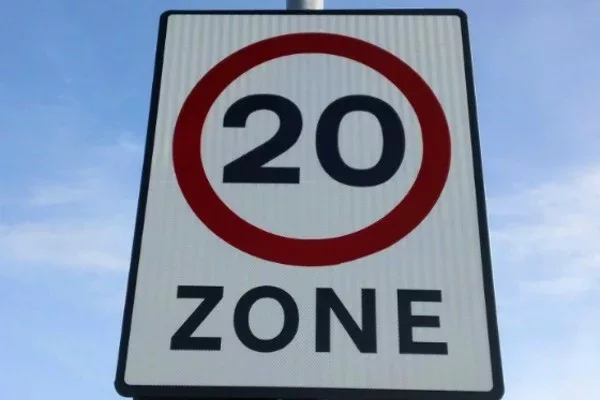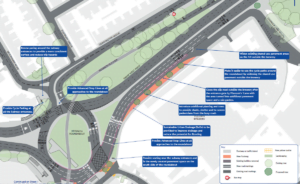Every residential street in Cornwall is set to get a 20mph speed limit after the council said its pilot scheme was a success. Cornwall Council is looking to spend £3.8 million on installing new 20mph signs in all residential areas which are eligible.
The plan to introduce a blanket speed limit reduction from 30mph to 20mph was a key manifesto pledge for the Conservatives in the 2021 council elections. Since then a pilot scheme has been operated in Falmouth, Penryn and Camelford, reports Cornwall Live.
By reducing speed limits in residential areas the council hopes to make roads safer and reduce the number of accidents, deaths and injuries on Cornwall’s roads. While the government does not set 20mph as a default speed limit several other local councils including Oxford and Bristol have introduced the lower limit to improve safety.
As well as introducing road signs to inform motorists of the lower speed limit the council is also planning a communications campaign to publicise the change. The changes will be made over a series of five phases which will be completed by 2026.
With the lower limits already introduced in Falmouth, Penryn and Camelford the next areas which will see the change in 2023 will be Camborne, Pool, Redruth, West Penwith, Truro and the Roseland. Phase three in 2024 will see the 20mph limit introduced in Hayle, St Ives, St Austell, Mevagissey, Newquay, St Columb, Cornwall Gateway, Liskeard, Looe and China Clay areas.
The fourth phase in 2025 will cover Helston, South Kerrier, Bude and Launceston. While the last areas to get the new limits will be Wadebridge, Padstow, Bodmin, Caradon, St Blazey, Fowey, Lostwithiel, St Agnes and Perranporth which will all be in the fifth and last phase in 2026.
A report on the project is set to go to the council’s economic growth and development overview and scrutiny committee when it meets next week. Councillors will be asked to approve the proposals with a final decision on the scheme set to be made by the council’s Cabinet in March.
The report explains: “With a sign-only delivery, we will be reliant on behaviour change to reduce vehicle speeds towards compliance. We acknowledge this will take time and we’re addressing this through our comms/engagement strategy. We will target our strategy throughout the delivery of each Community Network Area (CNA), but we’re also proposing to continue this engagement with a four-year rolling monitoring programme, post-delivery for each phase. With delivery anticipated to be completed in 2026, this monitoring would continue until 2030.”
The economic growth and development overview and scrutiny committee will meet on Tuesday (January 10) to discuss the report.





















